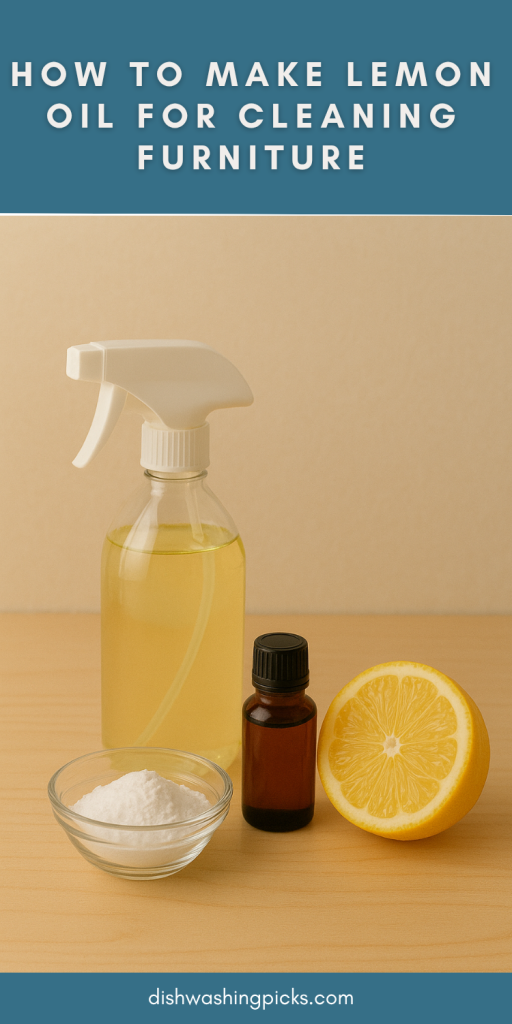
Let’s be honest—furniture gets grimy way faster than we expect. One day your coffee table looks Pinterest-perfect, and the next it’s wearing a layer of fingerprints, smudges, and who-knows-what that magically appears out of nowhere. And if you’ve ever flipped over a bottle of commercial furniture polish to peek at the ingredients? Yikes. You’ll find a cocktail of chemicals that sound more like they belong in a science lab than in your living room.
So here’s the deal: you can totally skip the mystery stuff and make your own lemon oil cleaner right at home. It’s natural, smells like a freshly cleaned kitchen (without the fake lemony “air freshener” vibe), and it works just as well—sometimes better.
Why Lemon Oil, Though?
Good question. Why not just stick to soap and water?
Well, lemon oil isn’t just about the smell—though let’s be real, that citrusy zing makes everything feel fresher. It also has natural grease-cutting properties, meaning it helps dissolve that sticky residue that somehow shows up on tables, shelves, or wood cabinets. And on top of that, oil conditions the wood, keeping it from drying out and giving it that subtle “just polished” glow.
So basically, lemon oil is doing double duty: cleaning and conditioning. Think of it as giving your furniture a little spa day.
What You’ll Need
Here’s the best part: you don’t need anything fancy. No shopping spree, no obscure ingredients. Just raid your kitchen and pantry, and you’ll probably already have what you need:
- 1 cup olive oil (or jojoba oil if you want to be extra fancy)
- 1/2 cup fresh lemon juice or about 15–20 drops of pure lemon essential oil
- (Optional) a few drops of white vinegar if you want an extra cleaning boost
That’s literally it. Two or three ingredients, and you’re in business.
How to Make It (Spoiler: It’s Easy)
Alright, here we go.
- Grab a clean jar or bottle (bonus points if it has a lid or a pump).
- Pour in the olive oil. This is your “moisturizer” for the wood.
- Add your lemon juice or essential oil. That’s your cleaner and freshener.
- If you’re using vinegar, toss that in too—it’ll help cut through extra grease.
- Shake it like you’re making salad dressing. Done.
See? Told you it was easy.
How to Use It
Okay, so you’ve got your magical lemon oil cleaner. Now what?
- Dip a soft cloth into the mixture (an old t-shirt cut-up works just fine).
- Wipe it over your wood furniture—tables, chairs, shelves, whatever needs a little love.
- Buff it gently with a dry part of the cloth until the surface shines.
Your furniture will smell amazing, look glossy, and feel smooth to the touch. Bonus: no weird chemical film left behind.
A Few Handy Tips
- Test first. Always try a tiny spot before going full send, especially on antiques.
- Store it right. Keep your lemon oil in a cool, dark place. If you used fresh lemon juice, make smaller batches since it can go bad faster than essential oil.
- Don’t overdo it. A little goes a long way. You don’t want your table looking like it just ran a marathon and is drenched in sweat.
Wrapping It Up
So there you have it—your DIY lemon oil cleaner. Simple, natural, cheap, and it actually makes you want to clean just so you can smell that fresh citrus kick in the air. Imagine yourself polishing your dining table before guests come over… instead of pulling out a can of chemical spray, you grab your little homemade bottle. Not only do you feel eco-friendly and thrifty, but your guests will probably ask, “Wow, what’s that smell?” And you get to smugly say, “Oh, it’s just something I whipped up at home.”
Trust me—it feels good.
